The Defectors Return: Marmont and Hollis
Why did the reigning MX Nats and Off-Road champs both change race teams for 2012, taking their Number-One plates with them? In Transmoto Dirt Bike Magazine‘s 2012 June (#20) issue, we investigated why Jay Marmont and Chris Hollis made the surprise decisions to jump ship. Why are we reflecting on this now? Because for season 2014, both riders are back on blue, where they were in 2011. Marmont’s back under Craig Dack’s wing at CDR, and since the team’s now handling Yamaha’s factory off-road effort, Hollis is as well…
The Defectors
People say that death and taxes are life’s two great certainties. But what about change? Life will certainly throw change at you. And, unlike death and taxes, change isn’t always imposed on us; it’s something people seek for a variety of reasons. Some do it to leave behind something they don’t like. Some do it for the promise of a better future elsewhere. And some do it simply for the sake of change itself; to make a fresh start. But why did Australia’s two reigning national champions – MX Nats champ, Jay Marmont, and AORC champ, Chris Hollis – both opt to change race teams for 2012, and take their coveted Number-One plates with them? Why’d they turn their backs on the magic recipe that had proved so successful?
From the outside, their decisions to jump ship appeared hard to fathom. Marmont had notched up five championship wins in four years with CDR Yamaha in what was one of the most successful partnerships in the sport’s history. And Hollis had won titles with the Ballard’s Yamaha team virtually every year they’d worked together.
So, now that the two champs have settled into their new surroundings – Marmont with Monster Energy Kawasaki and Hollis with the Motorex KTM Off-Road outfit – how do they reflect on their decisions to change teams? And how do their team managers, new and old, feel about gaining/losing a national champion, and the coveted the Number-One plate that comes/goes with him?
When you talk to Jay Marmont and Chris Hollis, it’s clear that neither of them made their decisions lightly. They were both acutely aware of the risks in leaving behind a winning formula and the relationships they’d built within the team. And the task of weighing that up against the promise of greener pastures elsewhere was not an easy one.
“It’s true I’ve been successful every year I’ve been on the Ballard’s team,” explains 27-year-old Chris Hollis. “But that doesn’t automatically mean signing on with another team is a leap of faith. My decision came down to where I wanted to go with my racing in Australia. When I left Ballard’s Yamaha to sign with Husky for 2009, it was all about my ambitions to get to Europe, but I got injured and it didn’t work out. This year, the KTM deal included an option to race Finke and a few other desert races with all the team support I could ever ask for. That was attractive to me. Yamaha, on the other hand, wanted to stick with the 4-Day and AORC series only, which didn’t give me the option to spice up my race program. The other thing was that only KTM offered me a two-year contract, which fits with where I’m at in my life; looking at financial security and buying a house. I was confident the bike would be good and I knew the KTM team was professional and well organised. So, in my eyes, it really wasn’t a huge risk when you consider all those things.”
^ Chris Hollis…
Marmont’s move was harder to make immediate sense of, even for Jay himself. Five consecutive premier-class titles with the CDR Yamaha team hardly amounts to a sinking ship, and Jay’s sponsors, family and friends all found it difficult to comprehend his decision in the early days. “The success I had with Craig Dack came through a lot of hard work, plus the fact that CDR Yamaha is such an experienced team,” explains Marmont. “But I felt like I’d done everything I could do with Yamaha, and I really didn’t want to get stale. I wanted the challenge of something new and exciting to motivate me for the next chapter of my life, and I believe it will help stretch out my racing career for an extra year or two.”
People in Jay’s corner remained skeptical. They were quick to remind the 29-year-old that the only other Aussies to win four Australian MX titles were his team manager, Craig Dack, and Stephen Gall – both of whom are Yamaha ‘lifers’ and who bleed blue blood to this day. They stressed a move away from CDR was a brave and even dangerous step for a reigning national champ, irrespective of how good the new team was.
^ Jay Marmont and his 2011 squad…
“A lot people were literally shrugging their shoulders, asking me why?” reflects Jay. “And I really didn’t have an answer for them because, in many ways, the decision came from the heart. I was totally open with Craig Dack about the fact I felt I really needed a change. He was very understanding, and kept reassuring me that the deal was there if I wanted it.”
Despite all the heartfelt rationalising, and the fact he’d raced Kawasakis for a majority of his Junior career, Marmont agonised over the decision. His move to Kawasaki was the worst kept secret in the motocross paddock for months and months, but the official announcement took an eternity to come.
“Leaving CDR Yamaha was definitely the hardest decision I’ve had to make in my career,” Marmont admits. “I’ve become really good mates with all the guys on the team and enjoyed so much success with them. They knew me, and how to get the best out of me. We’re never going to forget what we had, and we’ll always be mates. When I signed with Kawi, my first phone call was to Craig Dack. It was a hard conversation, but I owed it to him. He wished me all the best. It was the end of an era for us, but I also felt really positive about the new opportunities. Troy Carroll’s Monster Kawasaki team is yet to win a championship, so they’re very eager to succeed – as are all the team’s sponsors. I really want to be part of building that success with them.”
For Chris Hollis, the decision to part company with Yamaha wasn’t as difficult. “I was getting the vibe from Yamaha that they were focused on signing Matt Phillips, and the deal they offered me really wasn’t very attractive from the start,” he says matter-of-factly. “I could sense they felt Phillips was the next big thing. But, hey, Yamaha has always been good to me, and they seemed to understand my decision – both after my 2008 AORC win and after last year’s title.”
^ Chris Hollis and Toby Price…
While leaving a team can often be a tough exercise for a rider, integrating themselves into a new team can be even more difficult, especially when you’re the reigning champ. That Number-One plate can upset team dynamics and put noses out of joint. But it wasn’t a major issue for the laid-back Hollis, who points out that egos and rivalry in enduro and motocross paddocks are two very different animals.
“I’ve never been about trying to be the dominant dude on a team, y’know,” he says with a laugh. “I get on well with Toby Price and always have. It’s frustrating when he beats me, for sure, but I’m not going to hold it against him simply because he’s on my team now. I don’t know that there’s a fierce rivalry there, but I do feel inspired to step up every time I race against him. Having Matt Phillips and Stefan Merriman on my team last year was the same. There are no dramas if someone beats me, whether it’s a teammate or not. Because we race against the clock in enduro, it’s easier to focus on your own game. In motocross, if a guy puts a rough pass on me, I just want to do the same straight back to him. In fact, I wanna kill him!”
Marmont is also philosophical about what he brings to a new team – good and bad: “You might say that Kawasaki has bought the Number-One plate, but at the same time, it also adds pressure to Troy Carroll as a team manager. He knows I expect that little bit more and I think he feels obliged to deliver on that. But pressure can be a good, healthy motivating force.”
^ Jay Marmont…
But how do the champ’s new team managers feel about the Number-One plate? Did they inherit it, pilfer it, or do they simply view it the icing that comes with the champ’s cake? And what do they think about comments that the inherent risk in signing a champion is that the only place he can go is sideways, or down?
“That is a big risk,” concedes Monster Kawasaki’s Troy Carroll. “And I spoke to the guys at Kawasaki and Monster about this at length. Jay’s won four motocross titles in a row. For anyone to go out and win five in a row is a big ask, especially when you look at the calibre of the Pro Open field this season with all the internationals. I’ve seen Craig Dack’s comments, where he’s said, ‘Anything but winning would have to be considered as a failure for Kawasaki’. But I think that’s a stretch. Sure, Dacka’s Yamaha team gave Jay the tools to be the champion, but at the end of the day, Jay’s the guy who won the titles. I know people think I chased Jay hard, but the reality is that he came to us initially. Jay was at a point in his career where he was ready for a change and to set some fresh goals to chase. We’re a young team so, of course, we took him on with open arms.”
Motorex KTM Off-Road’s Brad Williscroft also acknowledges the risk, but he’s quick to point out that he had an arrangement in place before Hollis had clinched the title last year. “So for us,” explains Willliscroft, “the fact Chris won the title ended up being a bonus. Admittedly, he won the title on a Yamaha, and the Number-One plate can help bring sponsors on board for us at KTM. But bear in mind that Chris didn’t win a round Outright last year on the Yamaha, and he’s already won Round 2 Outright on the KTM 350 this season. So I think the move’s been a good one for him, too.”
There’s a lot to be said for a team manger who can identify young talent and build them up into champions. But are pundits naive and cynical to suggest managers should be more focused on that, rather than ‘cashing in’ on another team’s successes and simply buying the Number-One plate?
“On the one hand, I think most team managers will say they like the idea of taking on and building up a young rider,” says Carroll. “On the other hand, corporate sponsors just want to see a winning team, especially in the premier Open class, where the money is. And there’s only one Pro Open champion each year. That said, I watch the other Under 19s and Lites classes very carefully. Kawasaki is getting much more active in building young guys up. We now have a dedicated Under 19s team, and we’re looking at doing more for Juniors. The idea is that we build more of a US-style Team Green structure, where kids can aspire to scoring a seat with Australia’s Monster Energy Kawasaki team one day. It’s got a nice ring to it, doesn’t it?”
^ Troy Carroll and Jay Marmont…
Williscroft takes a more holistic approach by considering his team’s rider line-up: “It’s always good to be able to identify a young guy with potential and turn him into a champion. But I believe having the right team make-up is also very important. You need a blend of established, proven performers as well as young guys with promise. And it depends on what you can afford, too. I’ve found that younger riders tend to place too much emphasis on the sign-on money, whereas it’s really all about getting the right bike and the right support around you. Because if you have those things, you can make up for any sign-on shortfall though contingency payments. Plus you win titles, of course!”
Williscroft and Carroll are both former Australian champions, and they understand that the danger of importing a reigning champion into team is a clash of egos with existing riders. For Carroll, the key is how the situation is managed: “It can be a touchy subject for sure. I mean, this is Billy Mackenzie’s third year with us, and he’s finished second and third to Jay Marmont in the past two Motocross Championships. So I made it clear from the start that there’d be no number-one rider on the team, and that everyone would be treated equally with parts and support. It’s true that we’ve done twice as much pre-season testing with Jay, but that’s because Jay is completely new to the bike, whereas Billy already understands it. There’s definitely healthy competition going on between the boys, but they get along well. I expect there might be a heightened rivalry as we move further into the season, but they’re both professional enough to keep it to the racetrack.”
Williscroft was less concerned about the ego clash issue – first, because he knew Hollis and Toby Price were already mates and, second, because enduro riders tend to hang out with their rivals more than motocrossers do. “When we signed Chris,” Williscroft points out, “Toby Price was still considering his option to race in America. So it was difficult to juggle our options at the time, but we had to get a ‘strike’ rider in case Toby exercised his USA option. Because Toby stayed in Oz, it worked in our favour and we ended up with two of the sport’s top riders – the 2010 and 2011 Outright AORC champions, in fact. They’re both smart enough not to get their noses out of joint or argue about who the team’s ‘main’ rider is. Actually, they tend to feed off each other’s speed and success.”
^ Brad Williscroft and Chris Hollis…
Former Managers’ Take
End-of-year celebrations can often be a bittersweet affair for team managers. The spraying champers and photographs of the ecstatic team holding the Number-One plate aloft often takes place against a backdrop of drawn-out contract negotiations for the following season. So how does a team manager cope with the loss of a rider who they’ve just won a championship with? Do riders become harder to deal with after they win a title? And how hard is it to accept that another team gets to run that prized Number-One plate for an entire season? We posed these questions to Jay Marmont’s and Chris Hollis’s former team managers, Craig Dack and Geoff Ballard.
Craig Dack
“I could talk for hours about how it played out. Kawasaki – and Troy Carroll, in particular – pursued Jay Marmont very, very hard. That started it. It’s a very bold move for a team to go after a champion like that, especially a guy like Jay who’s had so much success with one team in a short space of time. That really doesn’t happen very much because the team puts themselves in a position where they basically have to win six championships to do a better job than us. We put a hell of a lot of things in place during the past four years to satisfy Jay. So if Kawasaki has come in and matched all of that in one fell swoop, then good luck to them.
“People really don’t understand how touch-and-go our negotiations were for a long time. At one point, Jay was gone to Kawasaki for all intents and purposes. But then we started to take some big steps forward with bike set-up and it all started to come good in the back half of the motocross season. And after Jay dominated the Super X series, he started second-guessing himself, and had a very hard time making his final decision. I believe that Monster, who are very proactive in the sport at the moment, may have helped tip the deal in favour of Kawasaki.
“In the end, it came down to the fact that Jay genuinely felt it was time for a change. Jay knows that CDR put everything into our working relationship to win those titles, and there was never any bad blood. Throughout the negotiations, Jay was a gentleman and very professional to deal with. And we remain friends. I know some people get upset when another team gets to run ‘their’ Number-One plate. But it’s your team and your rider who won that championship, and no one can ever take that away from you. Yes, the new team can leverage off that Number-One plate with sponsorship deals, but so do we, of course, via our advertising. We reinforce the success of our team with that rider.”
^ Left to right: Craig Dack, Jay Marmont and Josh Coppins…
NOTE: For an interview we recently we did with Dack on the re-signing of Marmont for season 2014, click here.
Geoff Ballard
“I believe Chris Hollis felt a little overshadowed by the success of his teammate, Matt Phillips, in the second half of last season. But Chris knew he had a good shot of winning the Outright title, and held off signing for a long time. All riders think they’re worth more if they win the title, and that may have contributed to why Chris left; because the Number-One plate was worth more for KTM to grab. I really don’t enjoy the silly season at all. But when you’ve been in the game for a while, you learn to accept that riders come and go, even if you don’t always understand their reasons. They’re just trying to get the best deal they can. Sometimes, they’re lured by dollars; sometimes, it’s other things. Hollis certainly had great results with Yamaha, so we know there’s no problem with the bike. He won AORC and A4DE titles with us and really dominated in 2008 before heading to Husqvarna. I spent a lot of time with him back then – and again at the end of last year – reinforcing the fact that he obviously gels with the Yamaha, and that you don’t always get what you’re promised elsewhere.
“After Chris’s experience with the move to Husky, it did surprise me that he was looking at other offers again for 2012. I think KTM paid good money to buy the Number-One plate. It’s a tough situation for them because, if he wins, he’s kind of expected to. If he doesn’t win, it looks good for Yamaha. In 1997, when Roger DeCoster poached Jeremy McGrath to ride Suzuki, he said, ‘This guy has dominated for years, so we’re going to spend a lot of money to make our bikes look terrible if he can’t win on them!’. Seeing the Number-One plate on another team’s bike all year is a tough pill to swallow. But you have to accept it and move on. We all got on really well with Chris. And you never know, he might come back
to us for a third time (laughs).”
^ Left to right: Chris Hollis, Stefan Merriman, Matt Phillips and Geoff Ballard…
—
Stay tuned this week for a video we’ll be releasing, starring Jay Marmont, titled What It Takes.
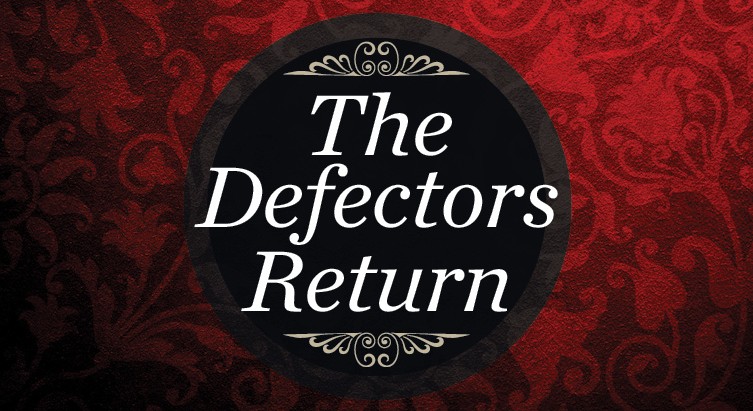
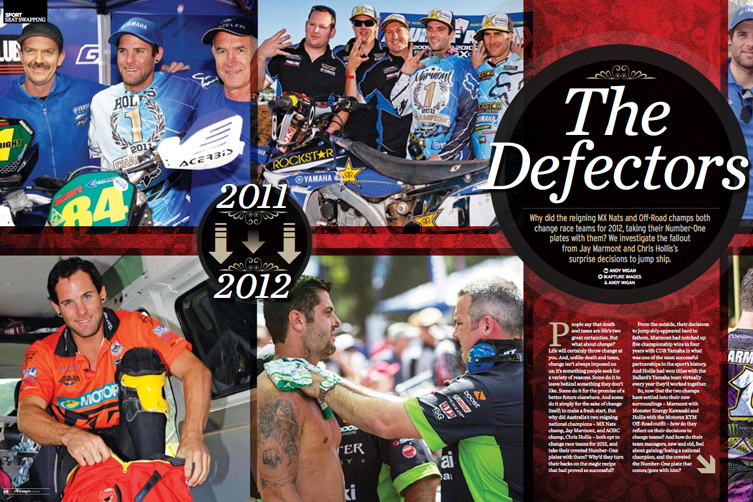



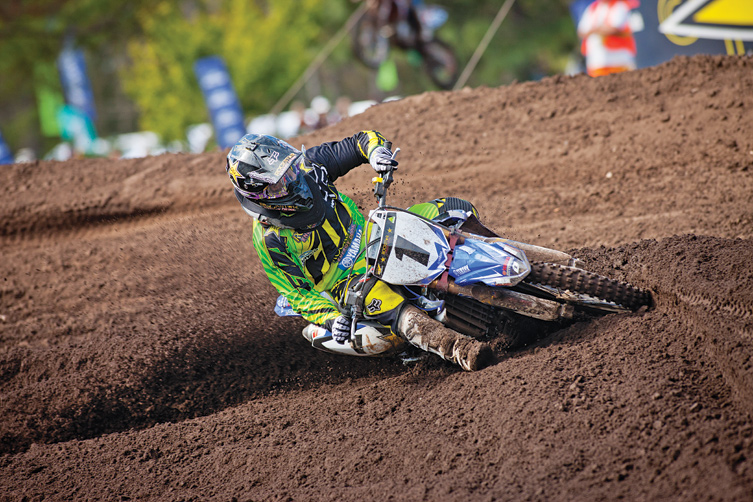

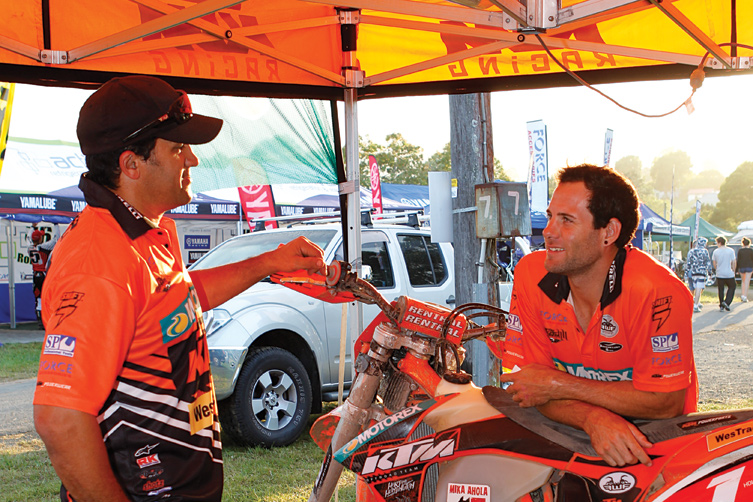
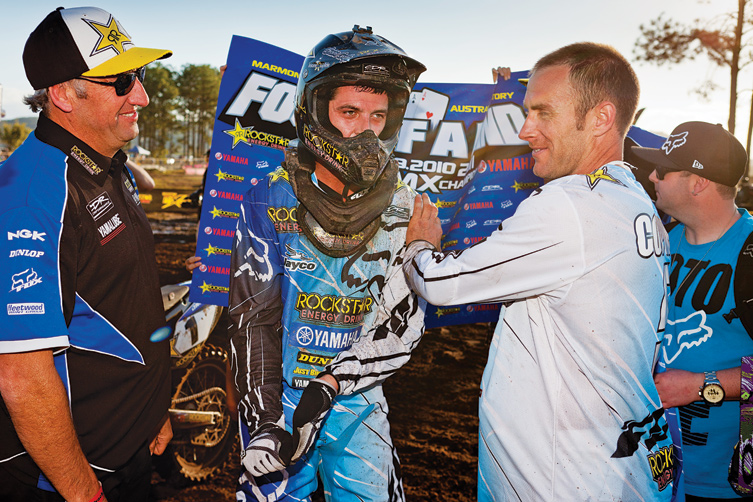
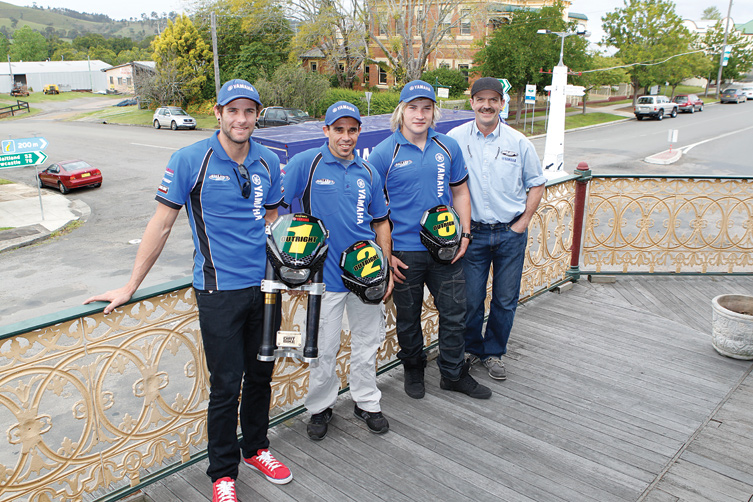



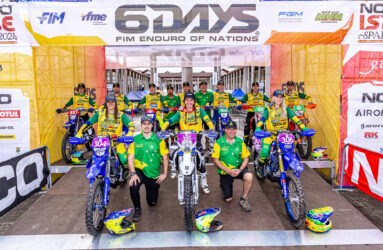

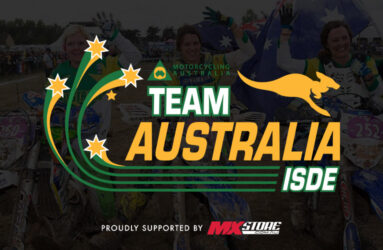
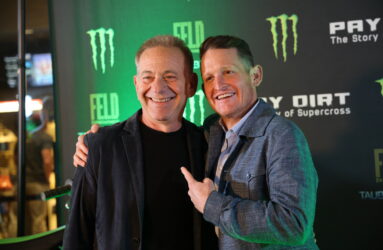

Be the first to comment...